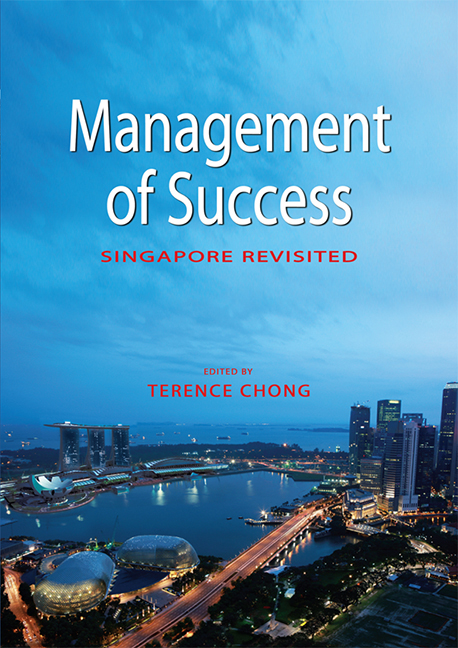Book contents
- Frontmatter
- Contents
- List of Tables and Figures
- Foreword
- Message
- Quote
- Preface
- The Contributors
- 1 Introduction: The Role of Success in Singapore's National Identity
- SECTION 1 SINGAPORE IN THE BIGGER PICTURE
- SECTION 2 LEADERSHIP, POLICY AND POLITICS
- SECTION 3 THE RESTRUCTURING OF THE ECONOMY
- 8 Singapore's Changing Economic Model
- 9 Globalizing State, Disappearing Nation: The Impact of Foreign Participation in the Singapore Economy
- 10 Exploring New Engines for Growth
- SECTION 4 THE TRANSFORMATION OF SOCIETY
- SECTION 5 THE LAW
- SECTION 6 MODIFICATION OF THE ENVIRONMENT
- SECTION 7 COMMUNITY AND NATIONAL SECURITY
- SECTION 8 LIFE IN SINGAPORE
- Index
8 - Singapore's Changing Economic Model
from SECTION 3 - THE RESTRUCTURING OF THE ECONOMY
Published online by Cambridge University Press: 21 October 2015
- Frontmatter
- Contents
- List of Tables and Figures
- Foreword
- Message
- Quote
- Preface
- The Contributors
- 1 Introduction: The Role of Success in Singapore's National Identity
- SECTION 1 SINGAPORE IN THE BIGGER PICTURE
- SECTION 2 LEADERSHIP, POLICY AND POLITICS
- SECTION 3 THE RESTRUCTURING OF THE ECONOMY
- 8 Singapore's Changing Economic Model
- 9 Globalizing State, Disappearing Nation: The Impact of Foreign Participation in the Singapore Economy
- 10 Exploring New Engines for Growth
- SECTION 4 THE TRANSFORMATION OF SOCIETY
- SECTION 5 THE LAW
- SECTION 6 MODIFICATION OF THE ENVIRONMENT
- SECTION 7 COMMUNITY AND NATIONAL SECURITY
- SECTION 8 LIFE IN SINGAPORE
- Index
Summary
My settlement of Singapore continues to thrive most wonderfully — it is all and everything I could wish and if no untimely fate awaits it, it promises to become the Emporium and the pride of the East.
— Sir Stamford Raffles, 1820SURVEYING THE CHANGING WORLD
The precursor to this volume was published when Singapore was recovering from the severe recession of 1985– 86. At the time of writing, the country is once again mired in a recession triggered by the global financial and economic crises that erupted in late 2008. There is, therefore, no better time than now to look back at the key economic restructuring efforts undertaken by the People's Action Party (PAP) government in the intervening two decades. The present survey seeks to evaluate these reforms and their impact on the broader macroeconomy critically.
In a fundamental sense, these restructuring measures did not change the economic model underlying Singapore's demonstrable success in the earlier era. This model has always emphasized free trade, an export-led economic development strategy, and a dependence on international capital, technology, and labour, all combined with an extensive role for the government. What has altered instead is the configuration of policies, incentives, and infrastructures engineered to bring about continual economic success in a changing regional environment and a rapidly globalizing world. As we shall see, the shifts in emphases have led to a steady migration of production into higher value-added — albeit more volatile — industries within the manufacturing sector and a concomitant rise in service sector employment.
Compared with the previous phase of economic development from 1965 to 1985, the macroeconomic consequences have been less benign. In particular, the unintended side effects of vigorous economic growth were increased output volatility and an amplification of business cycles. Despite attempts to mitigate the effects of these destabilizing fluctuations caused mainly by manufactured exports, the policy tools at the disposal of the government have been inadequate for the task given the constraints Singapore faces as a small and open economy. Therefore, the city-state's economic planners have to change the economic model in the medium term by reducing dependence on foreign capital and labour and expanding the role of the service industries.
- Type
- Chapter
- Information
- Management of SuccessSingapore Revisited, pp. 123 - 138Publisher: ISEAS–Yusof Ishak InstitutePrint publication year: 2010

